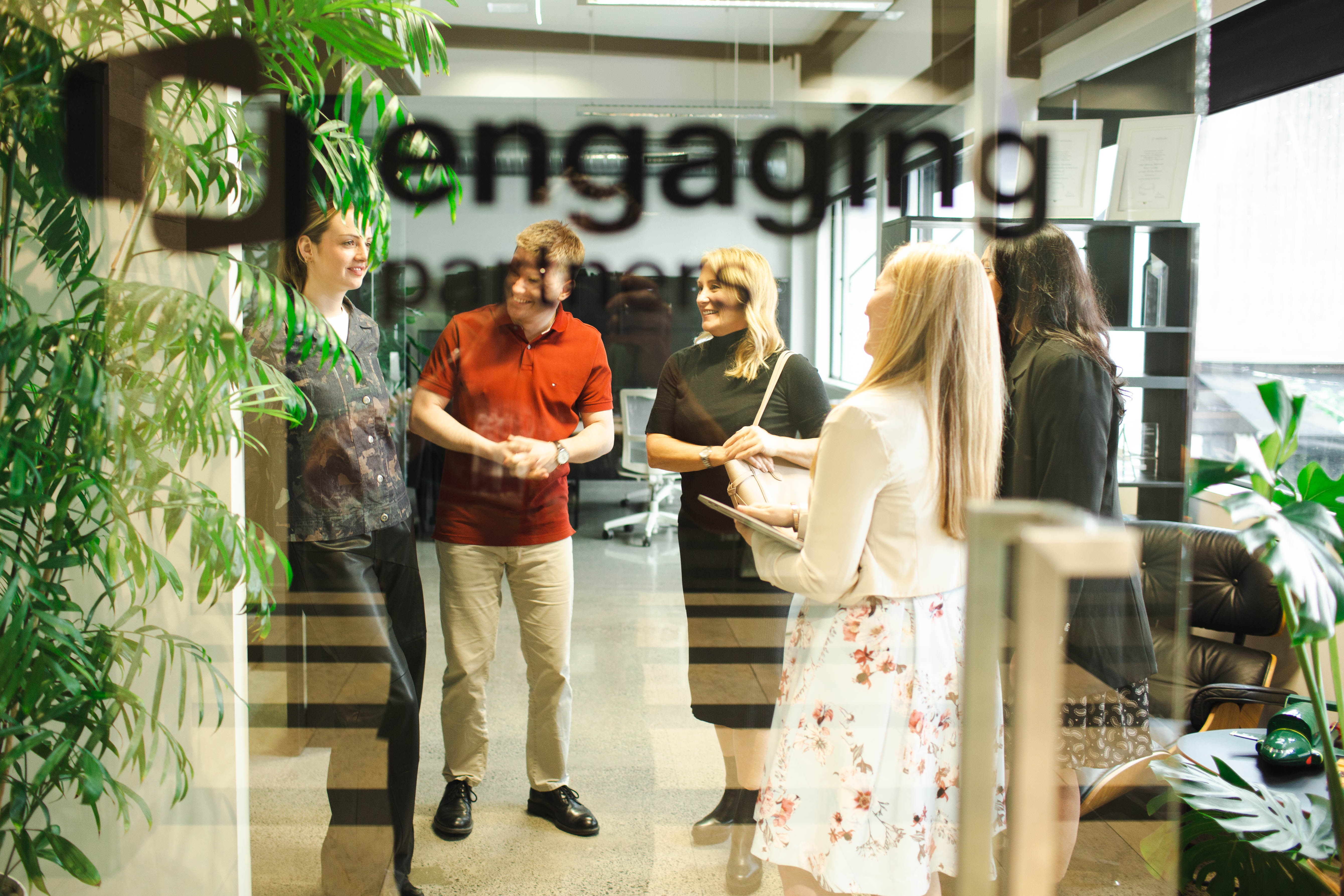Share
Building a customer portal that truly works is no small feat. You might have toyed with the idea of creating one in HubSpot yourself. After all, you’re already familiar with the platform, its intuitive interface, and its promise of seamless customer experiences. But then reality hits. The login form is just the start, and you quickly find yourself tangled in a web of permissions, integrations, and automations.
Sound familiar? Many businesses fall into the trap of underestimating what it takes to build a robust customer portal in HubSpot. From frustrated users abandoning a half-functional portal to hours of internal support teams struggling to patch things up, these DIY efforts can cost far more than they save.
This blog will help you decide whether to go it alone or bring in the expertise of a HubSpot agency. We’ll break down what goes into a successful HubSpot customer portal, when DIY might work, and when to call in the pros.
What Actually Goes Into a HubSpot Customer Portal?
At a glance, a HubSpot customer portal might just look like a login form and dashboard. But that’s only scratching the surface. Beneath the hood, a properly functioning customer portal is a complex ecosystem of features working seamlessly together to deliver value to your customers and your business. Here’s what’s really involved:
User Permissions and Roles
A good customer portal should cater to diverse user groups, from customers to distributors to internal teams. This means setting up distinct permissions and roles, ensuring every user sees precisely what they need and nothing more. HubSpot’s CRM allows flexibility in managing these roles, but implementing them properly can get tricky without technical expertise.
Object Associations
Customer portals are most valuable when they surface all the information that matters to your customers in one place. Whether it’s tickets, orders, subscriptions, or other data, these objects need to be correctly associated and displayed. For example, imagine a distributor accessing their account, seeing their purchase history, upcoming orders, and support tickets seamlessly tied together under one login.
UX Customization
The user experience makes or breaks a customer portal. While HubSpot offers some out-of-the-box themes, a truly branded, intuitive experience often requires extensive customization. From designing layouts that match your brand identity to ensuring seamless navigation, UX customization is essential.
Workflow Automation
Your portal can’t just present information; it needs to work behind the scenes. HubSpot shines with its automation capabilities, triggering workflows for ticket updates, delivery notifications, subscription renewals, and more. Building and syncing these workflows accurately ensures your portal isn’t just functional but incredibly efficient.
Reporting and Long-Term Maintenance
Launching your portal is just the start. You’ll need to monitor usage through HubSpot’s robust reporting tools, refine features based on user behavior, and ensure the portal stays up-to-date with your evolving business needs. Leaving this to chance can result in diminished value over time.
HubSpot customer portals are more than just login forms; they’re dynamic, data-driven ecosystems. Does your in-house team have the expertise to tackle these elements? If not, it might be time to think bigger.
When You Might Not Need an Agency
To be fair, not every situation calls for hiring a HubSpot agency. For some businesses, a simpler, DIY approach might suffice. But these cases are the exception, not the rule. You might not need an agency if:
-
Your Portal Needs Are Basic
- If you’re creating a simple portal that provides users access to basic support tickets or static documents, HubSpot’s built-in features can handle this.
- If you’re creating a simple portal that provides users access to basic support tickets or static documents, HubSpot’s built-in features can handle this.
-
You Have a Technical CMS and Ops Team
- If your team already has hands-on experience managing HubSpot CMS and CRM tools, they may be able to handle a straightforward portal themselves.
- If your team already has hands-on experience managing HubSpot CMS and CRM tools, they may be able to handle a straightforward portal themselves.
-
You Don’t Need Complex Data Connections
- If there are no intricate connections between multiple custom objects or third-party systems, a DIY solution might work.
Still, even the best DIY portals are limited. If your business is scaling or your customer needs are complex, you’ll quickly hit a ceiling.
5 Signs You Should Bring in a HubSpot Agency
For most businesses, creating a customer portal that delivers real impact means calling in the experts. Here are five clear signs you could benefit from partnering with a HubSpot agency:
- You Need Custom UX Tied to Multiple Data Objects
- If you want your portal to display complex, interconnected information (e.g., order histories tied to service tickets), a custom approach is a must.
- If you want your portal to display complex, interconnected information (e.g., order histories tied to service tickets), a custom approach is a must.
- You Want E-Commerce and Tickets in One Place
- Managing both purchase data and customer service information under one seamless portal requires advanced technical development.
- Managing both purchase data and customer service information under one seamless portal requires advanced technical development.
- Your Users Have Different Access Levels
- Distributors, customers, or even partners need varied access to your portal. Configuring these permissions without disrupting functionality isn’t easy.
- Distributors, customers, or even partners need varied access to your portal. Configuring these permissions without disrupting functionality isn’t easy.
- You Care About Performance Tracking
- Portals should go beyond access. If you want to track how users interact with the portal and refine the experience, expertise is essential.
- You Want Experience That Minimizes Risk
- Hiring an agency means you’re working with professionals who’ve built portals like yours before. They know the pitfalls and how to avoid them.
This is where a HubSpot agency brings immense value—not just in building something functional but in creating a portal that scales seamlessly as your needs evolve.
What the Right HubSpot Agency Actually Brings to the Table
Collaborating with a skilled HubSpot agency means tapping into expertise that goes beyond implementation. Here’s what you gain by working with the right partner:
- Solution Architecture That Avoids Tech Debt
- A solid foundation ensures your portal is built to last, minimizing future headaches and technical fixes.
- Workflow Design and Automation Logic
- Powerful automations ensure your portal handles repetitive tasks effortlessly, saving time for your team and enhancing customer satisfaction.
- Branded UX Development
- An agency ensures your portal looks and feels like an extension of your brand, delivering a cohesive experience to users.
- Ongoing Support and Optimization
- Your portal won’t remain static. The right agency monitors performance, responds to new needs, and ensures your portal remains a key business asset.
Why Engaging Partners Builds Portals That Actually Work
When it comes to HubSpot portal development, Engaging Partners stands out in the crowd. Here’s why:
- Expertise in CMS and CRM Integration
- We specialize in marrying the tools of HubSpot CMS and CRM to create a fully integrated experience.
- Focus on Performance, Not Just Implementation
- We don’t just build portals; we create solutions that add tangible business value over time.
- Proven Across E-Commerce and B2B Services
- Our experience spans industries, making us versatile and adaptive to your specific needs.
We help businesses across New Zealand and beyond deliver customer self-service portal solutions that work seamlessly, scale flexibly, and drive long-term success.
Thinking about a customer portal? Book a free 30-minute strategy call with Engaging Partners, and together, we’ll map out exactly what you need—from UX design to automation. This is strategy-first, not a sales pitch. Click below and start building a portal that truly delivers.

-1.jpg)



-1.png?width=352&name=Generated%20image%20(1)-1.png)





